Visiting Spain (for 10 minutes) - May 23, 2025
- Scott Farnsworth
- May 22
- 6 min read
SUMMARY As had become our custom, we enjoyed coffee in lobby. Took a nice long walk along the Nivelle River into Saint-Jean and signed up for afternoon boat trip. Walked along quay surrounding the pretty, well protected bay. Explored fun shops, the thrice-weekly outdoor market and Les Halles, the daily covered market. Bought some stuff, sampled lots. Had a very good lunch overlooking the bay then meandered over to the docking place for the Nivelle V for our boat ride south as far as Hondarribia, just over the Spanish border (briefly). Back at our beautiful hotel we feasted on our day’s purchases on Ron and Nancy’s balcony overlooking the garden. - Karen
DETAIL We get up and remember we are once again without a car. The plan for the day is to walk the city of Saint-Jean-de-Luz. We have no plans or reservations for lunch or dinner (other than maybe to buy a picnic and eat somewhere nice). As has become our custom, we gather down in the sitting room for morning coffee. It looks pretty nice out, not pure blue skies but what clouds there are don’t look terribly threatening.
We walk towards town on the hike and bike trail, just across from our hotel. We’re soon walking along the water, the Nivelle river, which dumps out into the Baie de (Bay of) Saint-Jean-de-Luz. It’s a tidal river so half the time we see water slowing flowing down towards the bay and the rest of the time it’s flowing in from the bay (with the rising of the tide). There are people also out walking, many with dogs. More than a few look Basque-ish, with their jaunty berets, protecting their possibly bald Basque heads.
In town we purchase tickets for a 45 minute boat ride (later in the day) on the Nivelle V tour boat. The route will take us out of the bay into the open water, and then south to Spain, well, at least to Spanish waters. There are lots of school age children awaiting their tour on the boat. We ask. No kids are planned for our boat ride. Yay.
The bay is shaped like a good sized French boule loaf of bread. On the city side there’s fine sand covering a very long crescent of a beach. Along that is a sea wall and walking path. We walk it, looking out at the people already sunning on the beach. In the water we see a group of six young people marching with the water up to their waists, using the drag as exercise. Good for them!
We arrive at a restaurant that a couple of us found independently and make a lunch reservation, outside. It’s Basque, of course, and is the number two rated restaurant in the city (out of a couple of hundred eateries). It’s a tiny hole-in-the-wall spot, overlooking the beach and the water. Continuing on we make our way back to the big covered marché, which we inspect in detail.
For a possible evening (dinner) picnic Karen, Ron and Nancy buy some local cheese and a gateau Basque. They sample other stuff they’re interested in or that’s offered up. At the Post Office and local grocery we buy stamps (for postcards to the US), instant coffee and “dried plums”. We hike back towards our lunch restaurant. Along the way we window shop and Nancy buys some dish towels with the four-armed whirl wind symbol of the Basque region (which we’ve been seeing everywhere).
Lunch is excellent. I always feel it my duty to try the local beer. Our hostess is very personable and tries to explain the mystery items on the menu. We becoming familiar with the coarse corn flour tortillas (cakes) that appear in many Basque dishes. We have seafood and roasted peppers, and delicious white leeks. We agree this is a top eating stop in town, despite the reasonable prices. The chef pokes his head out of the tiny kitchen and we shower him with praise, which he’s happy to receive.
Not feeling we’d done our part to support the local economy we get some tasty gelato to fill the remaining empty nooks and crannies in our stomachs. Before the boat ride we scope out from where our bus will pick us up tomorrow. There’s the zillion of local and regional buses, all with the same logo and labels. We know where they stop. But our small ‘one off’ bus, going all the way to another country, there’s no obvious spot it’ll be stopping. Finally we ask a pseudo-official who kind of takes us by the hand, walks us over to a spot and says “See that bus number 5528? That’s where your bus will be.” How sweet is that!?
Our boat ride starts out quite peaceful and ‘even keeled’ as we cruise across the calm waters of the bay. Out in the Atlantic, by contrast, we’re rocking and rolling. We keep our eyes on the horizon and listen to the occasional narration, working to keep off any possible motion sickness.
The narration points out spots of interest as we glide by the last specks of France and finally into Spanish waters. A beach is pointed out that is totally inaccessible by land. Reportedly it was a favorite for years of smugglers who could land with their goods from one country, transfer them to a boat from the other neighboring county, without ever being spotted. At least that was the plan.
We see a good looking building that we’re told was a hotel that opened just prior to the start of WW II (poor timing, eh?). It never really made it as a hotel, for that reason. Later it became a house for orphans from the SNCF (the French national railway). Apparently that job used to be a lot more dangerous! It’s still owned by the SNCF but many fewer orphans (if any) are produced each year.
Eventually we’re in Spanish waters and we turn around in a boat yard (where boats can hang when not actively fishing). It’s fairly empty. We’re told they’re pretty much out all the time, these days, catching what few fish there still are.
Back on terra firma (having not succumbed to any sea sickness) Ron and Nancy head back to the hotel while Karen and I do a bit of last minute shopping for tonight’s picnic dinner: some much needed vegetables, bread, and wine.
Around dinner time we convene, half in Ron and Nancy’s room and half out on their narrow balcony. We amass chairs and glasses and plates from the two rooms, and gather up all our food and wine and have a most excellent dinner. We quickly polish off a bottle of Provençal pink wine between the four of us. We’d bought another bottle specifically to enjoy with Mike and Liz (with whom we’ll be meeting soon in San Sebastián). We figure we can buy more wine in town tomorrow before our bus leaves, so we open that bottle, too. Dinner ends with desserts (and a bit more wine) and then time for bed. Tomorrow we say “Au revoir” to France for a while. For now, sleep.
Photos
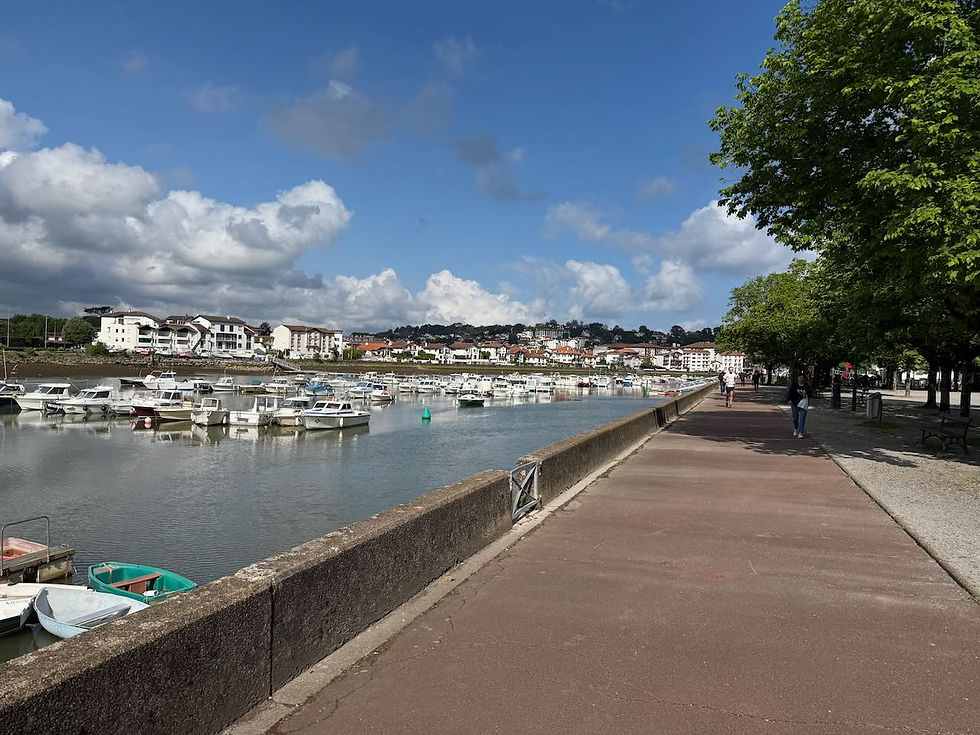
So many lovely walking paths in these European towns, with separate bike paths, exercise areas, sitting areas under trees, lots of green. Something to be said for socialism making life better for everyone.
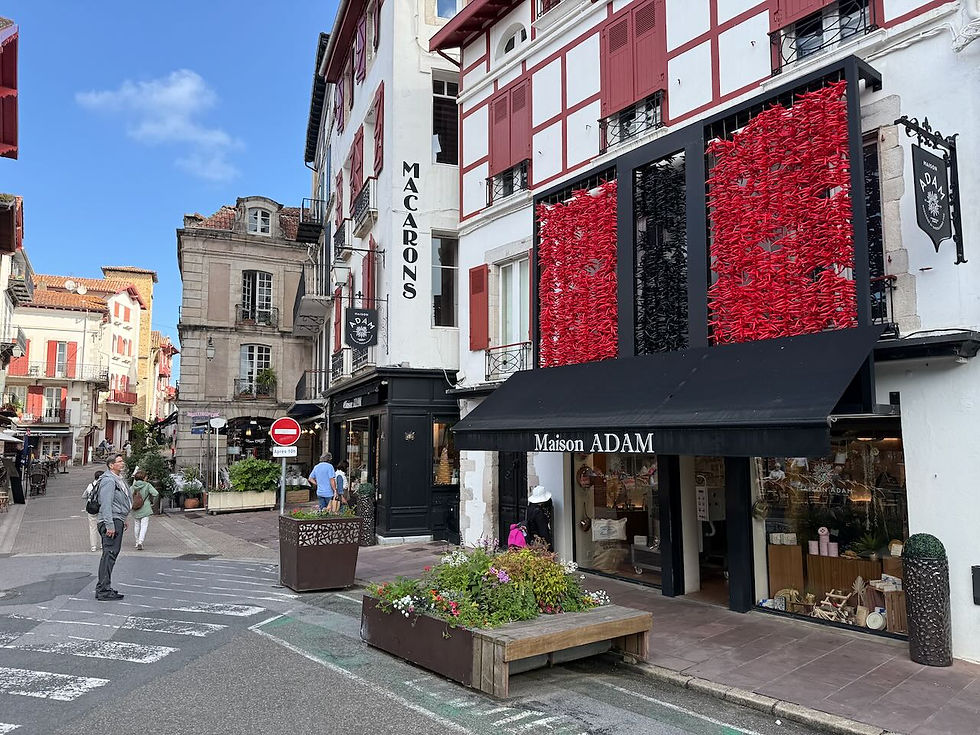
In town we're reminded that we're in Basque country, with the colors and the (probably plastic) drying peppers.

As always the markets are fun treats for us and a daily ritual for the locals. Such good sights and smells (with the occassional "here, taste this" bonus).
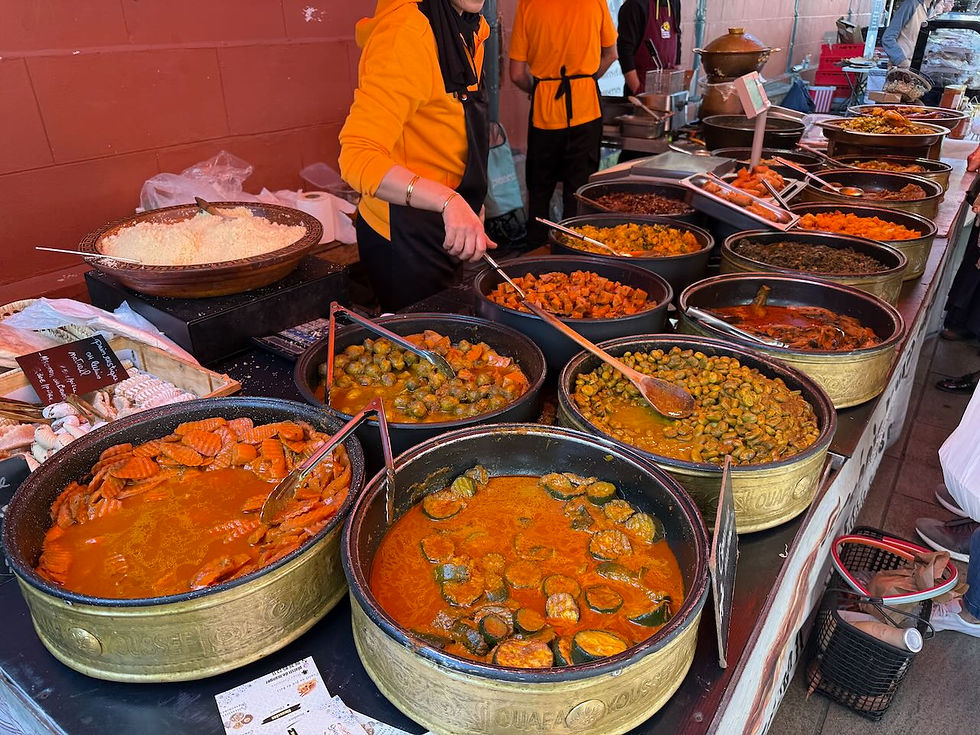
Too much good food for us to try, given that we're not actually staying here in a house with a kitchen (this time).
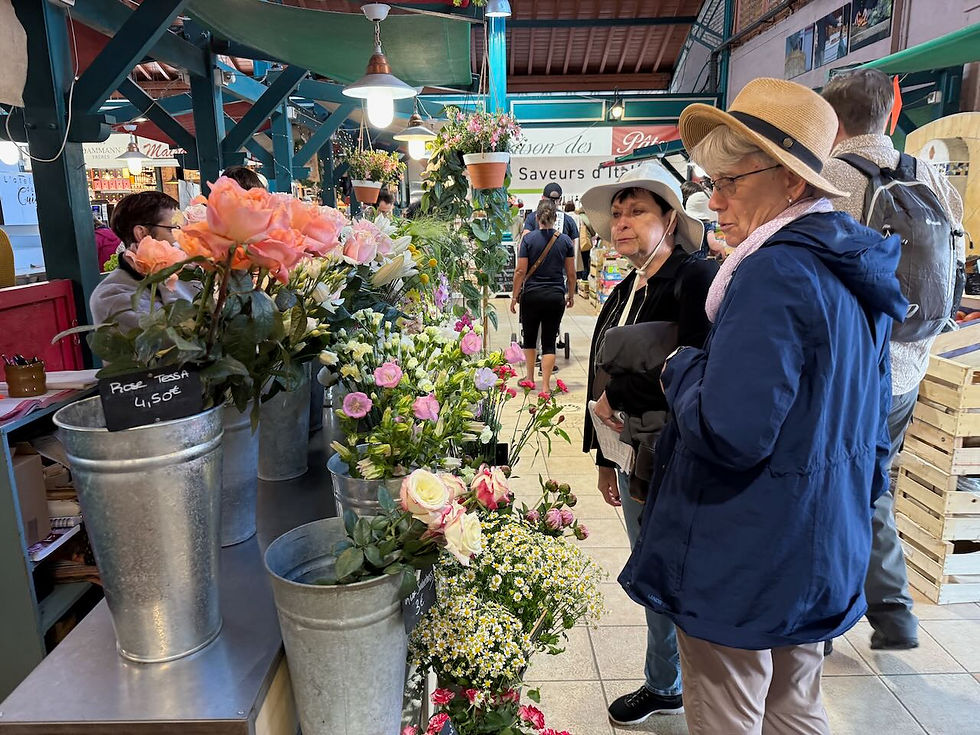
Possibly wondering how they can justify buying flowers. Hm...

Beautiful vegetables and fruits. Something we're not getting enough of.
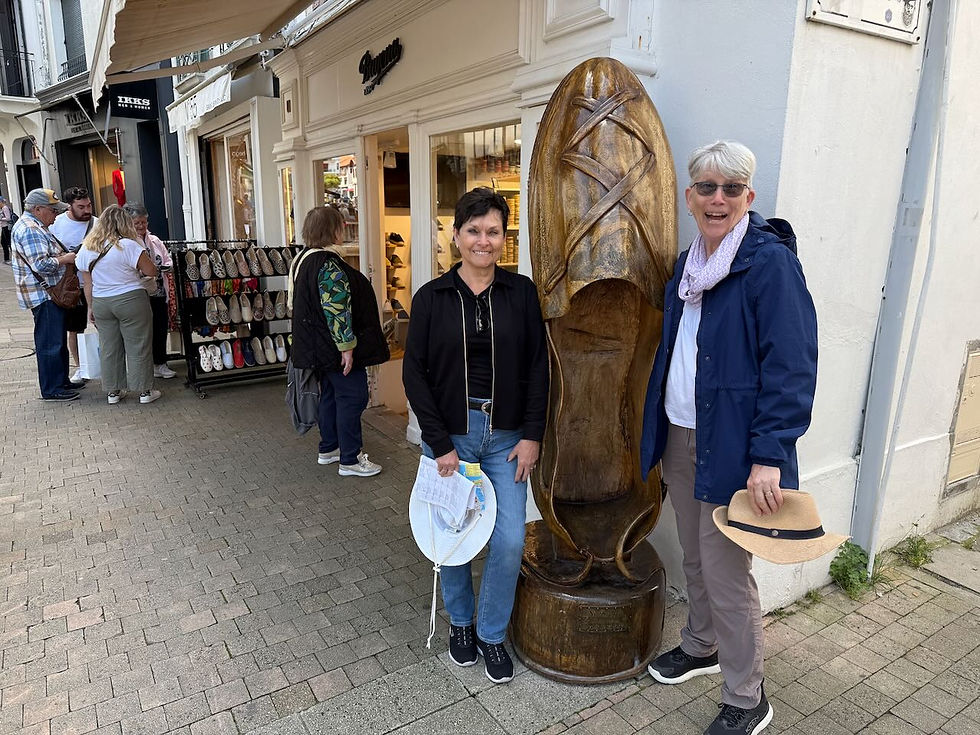
The girls love many things, including shoes. Maybe not ones this big, though.

Always people out walking. Good for the health. Lots of trim people here.
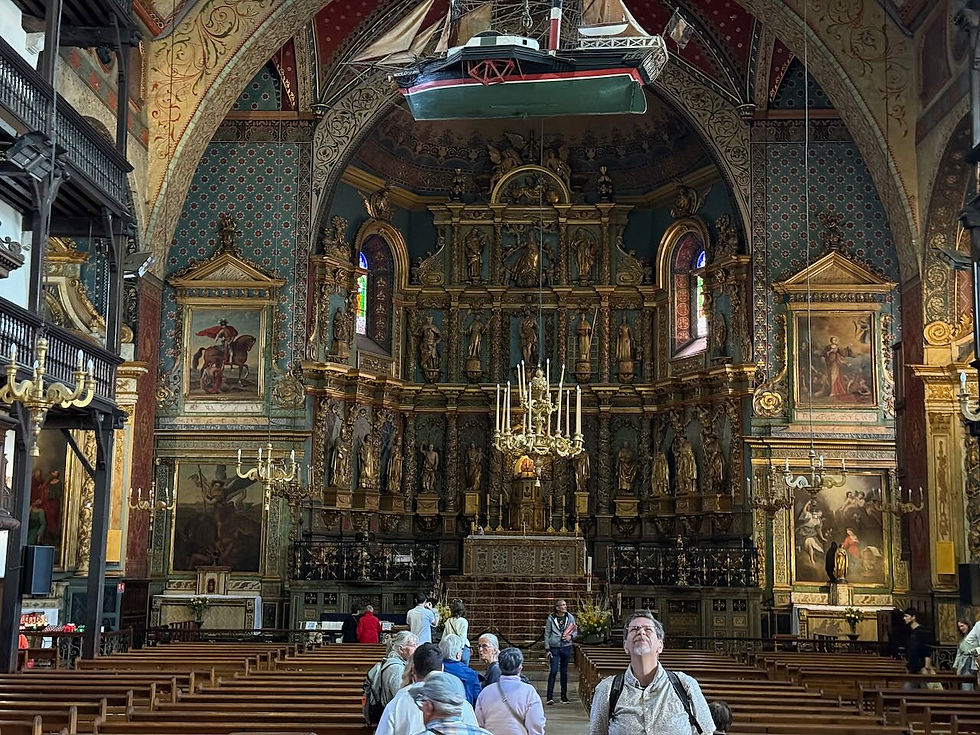
Visiting the big churches gives us some quiet time and beautiful things to look at. Lots of work goes into these places.
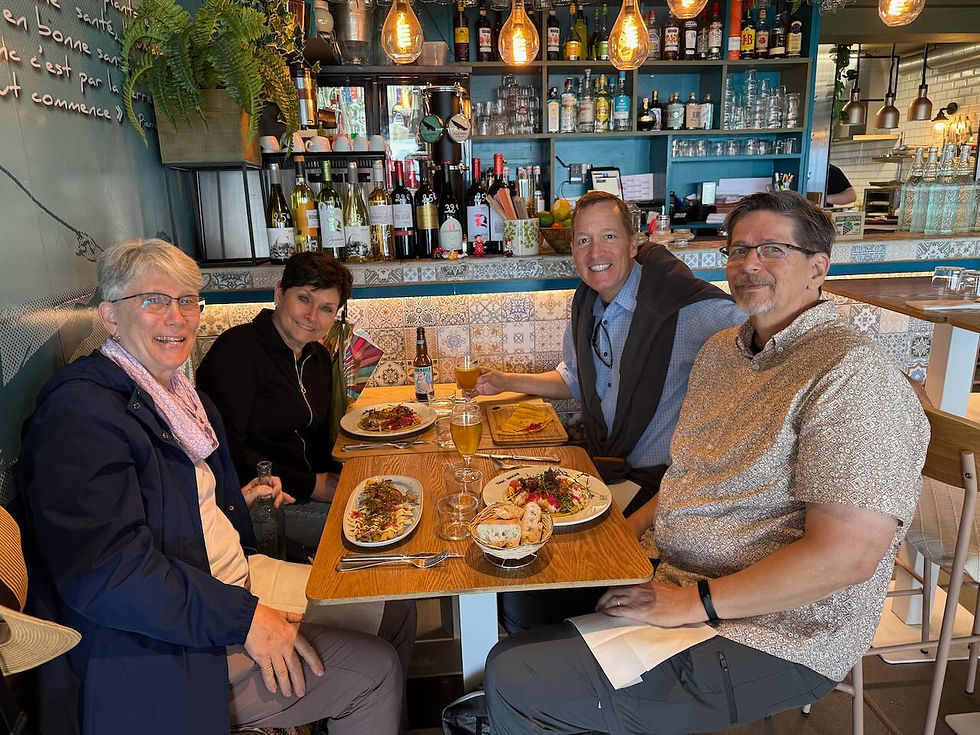
But then, you always have the food. Delish!
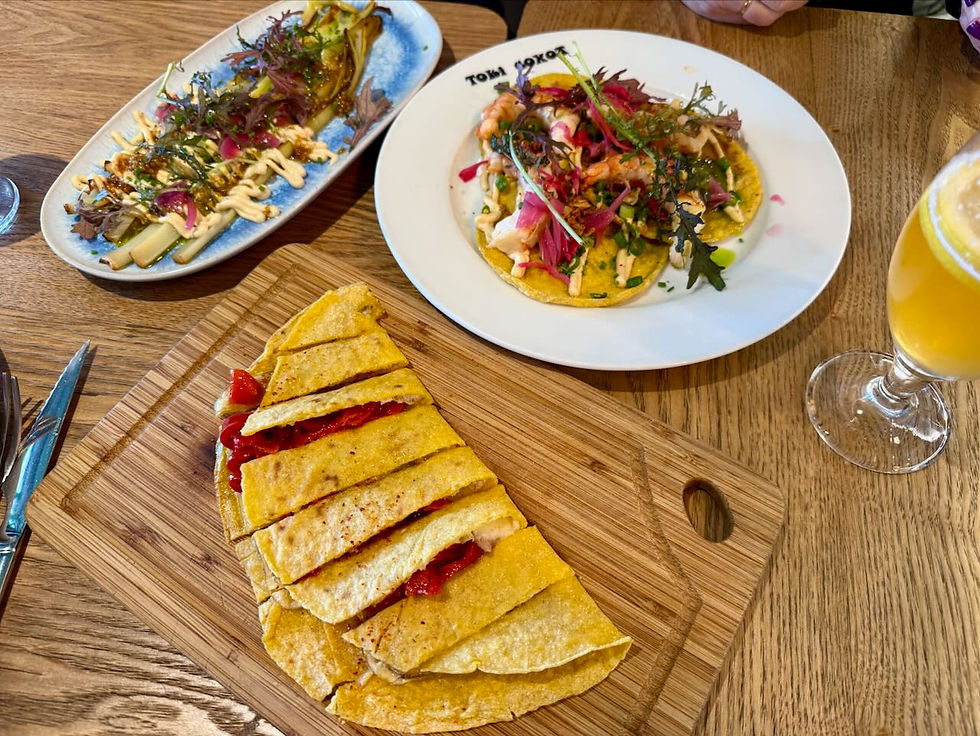
Coarse ground corn flour for the tortillas are a good start to many Basque dishes. The roasted peppers are so flavorful!

Part of the beach in Saint-Jean-de-Luz. It was never really very full. Maybe in mid-summer? The green in the distance is a big park we didn't get to, with a botanical garden. I sure they have great views of the Atlantic.
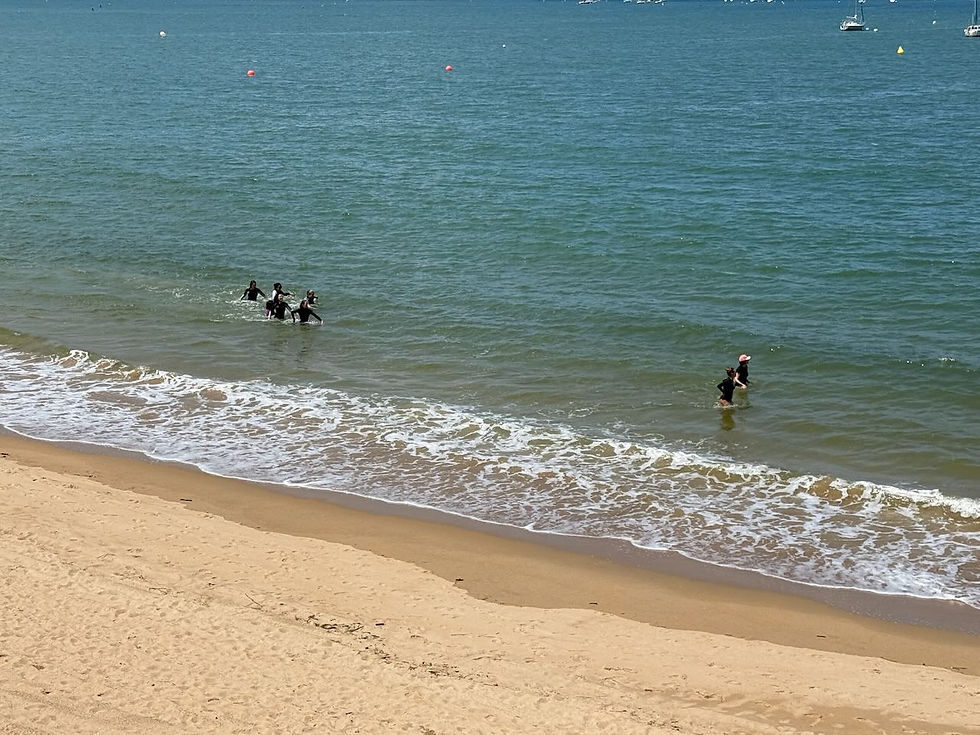
Some people lounge on the beach, others stride purposefully through the water, using the resistance as exercise. I toast them with my beer.
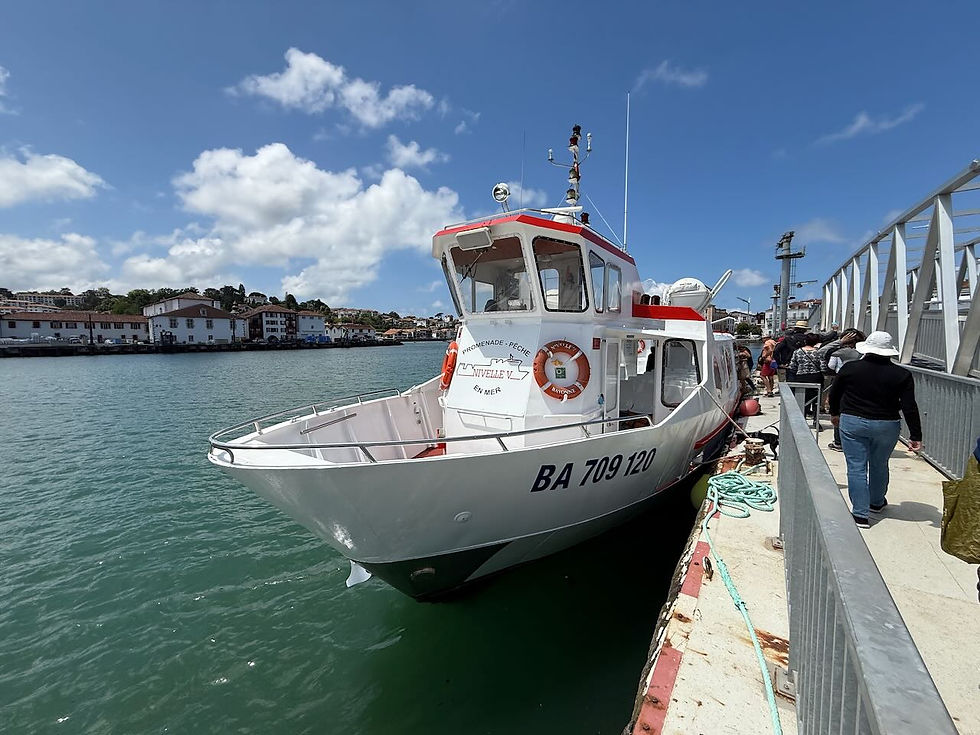
The Nivelle V, named for the river the boat's sitting on. We'll board this and head out into the Atlantic. Not so calm out there!

Schist rock, what they use for roof tiles (not these, but that type). It probably does a good job absorbing the waves in rough weather.
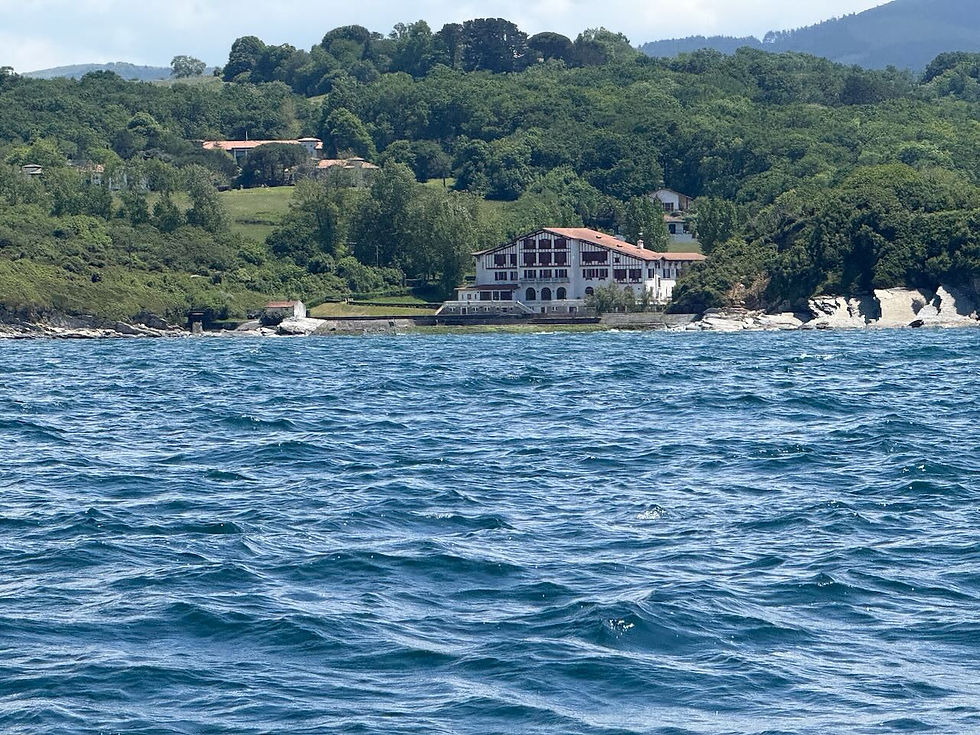
Originally a hotel opened just before WW II (bad timing). After that it was for the orphans from the French National Railway (I guess the job was more dangerous back then). It's still SNCF, but not so many orphans created on the job.

In Spain at last! Or at least in Spanish waters, and only for a short while. Never got off the boat down here.

Back at our hotel we did a picnic dinner here on the balcony of Ron and Nancy's room. It has a pretty nice view of the hotel's gardens.



Comments